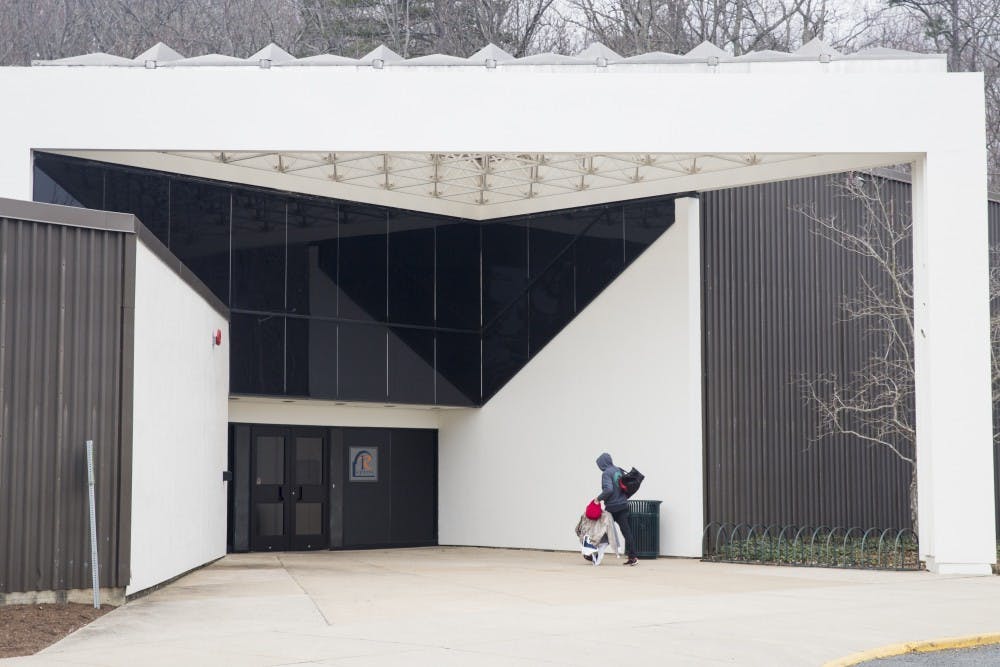Along with certain Albemarle residents in the area, students living in first-year dorms, Lawn and Range rooms, Brown Residential College and Lambeth Apartments, will now vote at Slaughter Recreation Center instead of the former voting precinct of soon-to be-demolished University Hall as a result of changes approved by the Albemarle County Board of Supervisors.
Slaughter Recreation Center — located behind O-Hill on Edgemont Road — is significantly closer to first-year dorms than U-Hall, which is about a mile away from first-year dorms.
Jackson Samples, a third-year College student and campaigns chair for the University Democrats, said he hopes this convenient location will increase first year voter turnout.
“It will make it leaps and bounds easier to vote here at U.Va. for first-years, because they literally only have to walk to the polls, as opposed to having to take a shuttle or taking public transportation,” Samples said. “So by cutting the time, probably in a quarter of what it used to take to vote, you're hopefully going to see a lot more first-year turn out.”
Isaac Weintz, a third-year College student and chair of the Student Council Legislative Affairs Committee, said he believes this location will not only benefit students, but will also help Albemarle County as a whole with increased participation and voter turnout.
Election Day is Tuesday, Nov. 6 and polls will be open from 6 a.m. until 7 p.m. Students will be able to vote for the Fifth District Congressional representative and one of Virginia’s members of the U.S. Senate.
The decision to move the polling location to Slaughter was enacted due to the pending demolition plans for U-Hall. The Board of Visitors approved the demolition plans last spring, following the discovery of asbestos and the need for structural repairs to the building as well as major efforts to overhaul the University’s athletics precinct.
Diantha McKeel — a member of the Albemarle County Board of Supervisors and representative of the Jack Jouett District, which encompasses on-Grounds housing — said in an interview that this change was long overdue, even before the discovery of asbestos in U-Hall.
“The U-Hall precinct has been a very awkward precinct to use for several years,” McKeel said. “For the volunteers who work the polling, there was no air conditioning, no heat, whether or not it was a primary or a gubernatorial election. So with the scheduled demolition, we knew, over the last several years, that we were looking to find a new facility.”
McKeel said the University also considered Bryant Hall at Scott Stadium, and various North Grounds locations as possible candidates for this move, but decided Slaughter was their best option.
The team looked for qualifications including ample parking and a spot that is clearly detectable to those unfamiliar with University Grounds.
“What we have to make sure is that we have enough parking for Albemarle residents that are going to be driving in and needing parking … [including] handicap parking,” McKeel said. “Also, we have to make sure we have access as far as for people looking for the public site that may not be a student [and might get lost].”
Weinz said Student Council had additional reasons for wanting Slaughter Gym as the updated voting precinct.
“Accessibility for first-year students was our number one priority,” Weintz said. “But of course the people at Lambeth will also be voting at this location, so we wanted something that was going to be accessible to them as well. Slaughter beats the criteria by being close to a bus stop … then they can get to that polling location fairly easily without needing an outside shuttle or driving themselves.”
Aside from being accessible via the University Transit System, Student Council will be partnering with Car2Vote, a non-partisan shuttle system, as they did for the 2016 and 2017 elections, to help take both on- and off-Grounds students to their polling locations.
While accessibility is a major benefit of choosing Slaughter, Weinz said parking is not.
“The biggest hang up for Slaughter Gym was parking,” Weinz said. “[But] we, myself and the county, worked with the University to try to sort out parking and it looks like they are going to have enough spots available during election day around Slaughter for students as well as community individuals that will be voting at that location.”
Weinz does not know how parking will pan out for a larger election, such as the 2020 presidential election, but he said he is hopeful that it will not be an issue.
“We will need to increase the parking for a presidential year, and the University as well as the county and the student body, are going to have to work together to continue to find what more parking would look like in that area,” Weinz said. “I think that Slaughter is going to be a great location and I really hope to see it as a long term polling place.”
McKeel said she believes this change will act as a valuable test run for a larger election.
“The elections coming up in November will be a really good test of how well Slaughter works for the voting precinct,” McKeel said. “It will give us an idea of the advanced capabilities when we’re looking at the presidential election which is really where the rubber meets the road as far as trying to get the most number of people into vote in a timely manner.”







